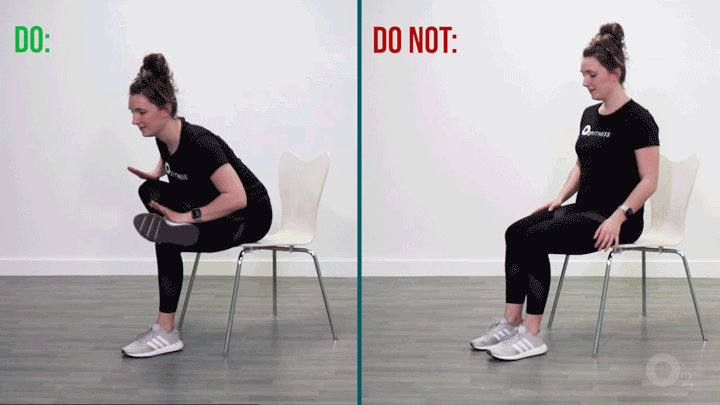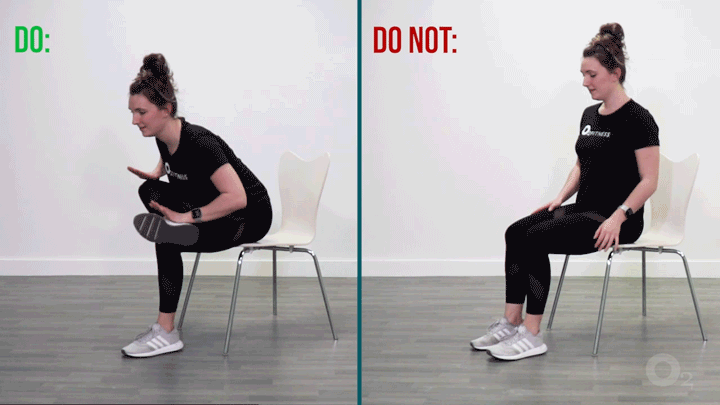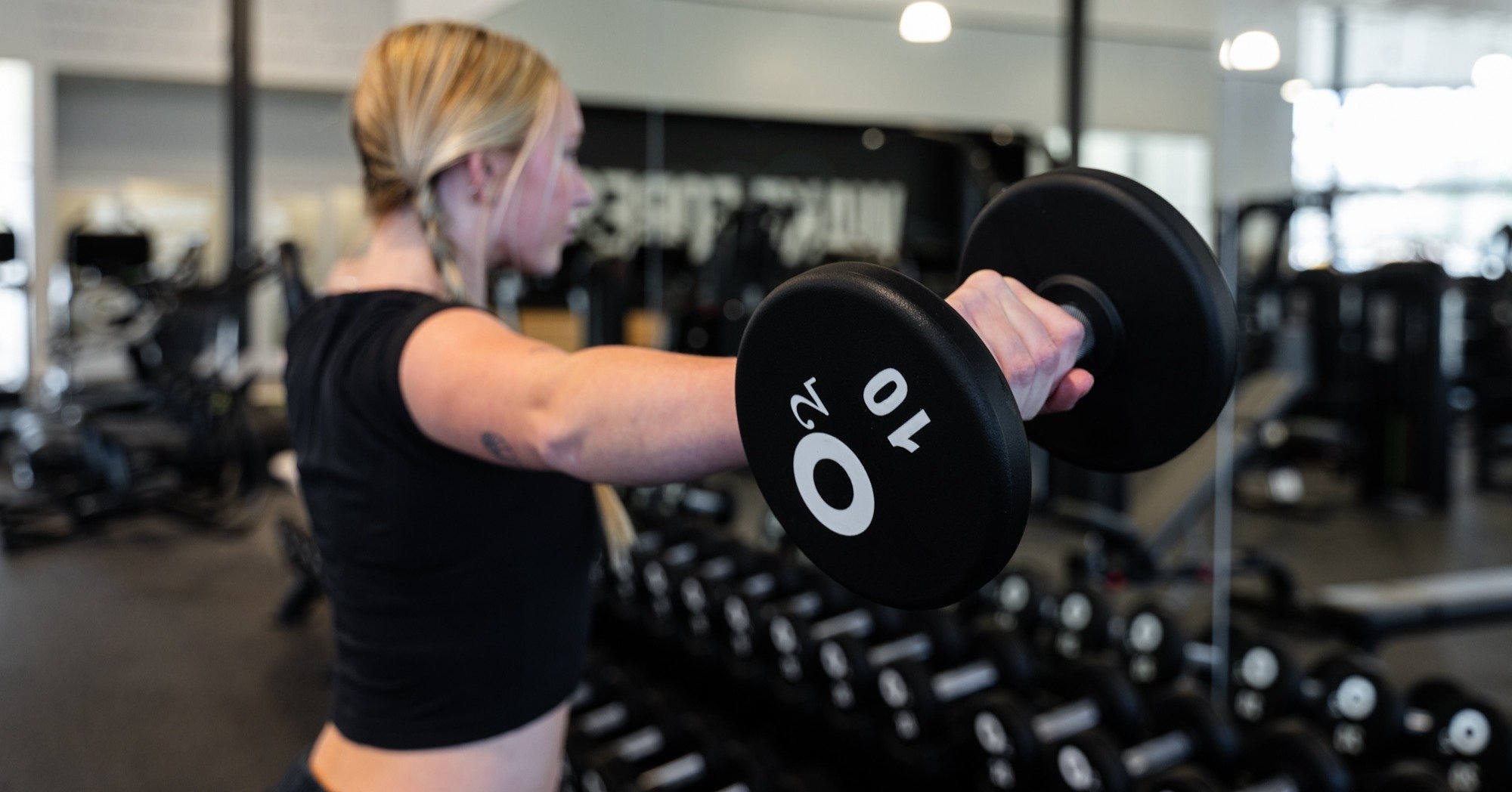Are you waking up with aches, burning or shooting pains, or numbness in your back, booty, and legs? You may be suffering from Sciatica or sciatic nerve pain. Sciatica is one of the most common but most misunderstood types of pain that people will experience because it can be caused by pinched disks, injury, or a variety of other factors.
Sciatic nerve pain and lower back pain can be scary and tempt us to stay down on the couch or in our chair, hoping that resting will make the pain go away sooner. But did you know that not moving can actually cause your pain to stay or get worse? The easiest way to relieve and prevent sciatic nerve pain is to stretch and strengthen those affected areas of your body.
Try these simple stretches our trainers recommend for sciatic nerve pain relief!
Sciatic Nerve Flossing
Nerve flossing is a great gentle stretch to start warming up the area surrounding the sciatic nerve. The term "flossing" comes from the fact that this stretch gets the nerves to slide between the joint and muscles. If your sciatic nerve is getting caught due to the muscles being too tight or the joints being too stiff, the nerve can become irritated and painful. The movement helps relieve pain gradually, along with improving your range of motion!
How to do Sciatic Nerve Flossing:
1. In a seated position, start by tucking your chin down and tucking your leg back.
2. Raise your chin to look up as you straighten your leg.
3. Repeat 5 to 6 times on each side.
Bridge & Squeeze
Bridges are an awesome exercise for strengthening your glutes, hips, lower back, and core. Stretching and strengthening these muscles is crucial for keeping the spine and your nerves in proper alignment.
How to do the Bridge & Squeeze:
1. Start by laying on your back with your knees bent and your feet hip-width apart.
2. Tuck your hips underneath you so that your spine has a natural arch instead of laying flat on the ground.
3. Inhale and lift your hips to create a diagonal line from your knees, hips, to your shoulders.
4. Squeeze your legs together to activate your inner thighs. This will strengthen the opposing outer muscles that
Figure 4
The sciatic nerve runs around your piriformis muscle, which is a very small muscle that is located deep within your buttocks muscle. The figure 4 stretch is perfect for targeting the muscles deep in your hips and buttocks, which makes this an excellent stretch to prevent and reduce pain around the sciatic nerve!

How to do a Seated Figure 4 Stretch:
1. Get a chair and sit with your hips underneath you to keep a neutral position in the spine.
2. Cross your legs by bringing your ankle over your opposite knee, forming a 4 with your legs.
3. Reach through your bent knee while pressing it down gently to feel the stretch in your glutes, hips, and lower back.
Remember: This stretch can easily be modified to be done sitting, standing, or lying down depending on your mobility and preference!
What to Avoid with Sciatic Nerve Pain
When you know there's traffic on the road you need to take, you avoid it to save yourself the time and headache of having to deal with it. If you know what causes sciatic nerve pain, you can avoid it and the pain that will eventually come with it. Here are some things you may be doing to develop or worsen your sciatic nerve pain:
Constantly wearing shoes with lifted heels:
While we may think "lifted heels" means high heels, even our sneakers can be secretly lifting us up with additional padding in the soles. Lifted heels cause our body weight to shift forward. This weight shift can easily disrupt the natural curve of our spine. If our spine is out of alignment, more pressure will be placed on those muscles and nerves which can quickly add to any pressure and pain you may be feeling in those areas.
Poor posture:
Hint: Posture isn't fixed by moving your shoulders!
When we find ourselves sitting hunched over or slouched down in our chair, we almost always roll our shoulders down and back. However, good posture doesn't come from the shoulders. It comes from the hips. When our hips are tucked underneath us, we lose the arch in our spine. Keeping our back too straight or too rounded puts more pressure on our spine and nerves, which can add to this pain. When you adjust your posture, move closer to the edge of your chair and sit with your pelvis and hips underneath you to regain the neutral arch in your back.
Sitting too long or too often:
A majority of us have a career that doesn't allow us to get up and walk around much throughout the day. Although offices are changing to be more ergonomic by using equipment like standing desks, sitting for a long time or a hard chair can worsen your sciatica. Sitting may feel like a break for our muscles, but in reality, sitting puts additional pressure on your glutes, lower back, and sciatic nerve. Try to set a reminder to move or at least stand a few minutes every hour if you can to help avoid pain caused by sitting!
Not being active!:
A body in motion stays in motion. If you aren't being active, you're not giving your body a chance to get stronger and more flexible. Inactivity, in the long run, will do your body and your sciatic pain a disservice in the long run. The sooner you can get up and get active, the better!
Takeaways
No one wants to or needs to be living in pain. However, sciatic nerve pain affects a substantial amount people in ways that can be debilitating. Whether you are suffering from sciatica pain or not, you can relieve and prevent pain from worsening through stretches and other easy strengthening exercises! Although these stretches are a great way to start, consider talking to a personal trainer or a physiotherapist to start naturally restoring your nerve health and reduce symptoms.










.jpg)